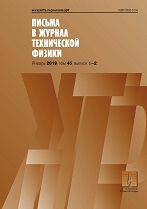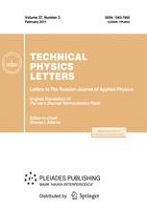|
This article is cited in 1 scientific paper (total in 1 paper)
Change in the mechanism of conductivity in ZrO$_2$-based crystals depending on the content of stabilizing Y$_{2}$O$_{3}$ additive
M. A. Borika, S. I. Bredikhinb, V. T. Bublikc, A. V. Kulebyakina, I. E. Kuritsynab, E. E. Lomonovaa, F. O. Milovichc, V. A. Myzinaa, V. V. Osikoa, S. V. Seryakovac, N. Yu. Tabachkovac
a Prokhorov General Physics Institute of the Russian Academy of Sciences, Moscow
b Institute of Solid State Physics, Russian Academy of Sciences, Chernogolovka, Moscow region
c National University of Science and Technology «MISIS», Moscow
Abstract:
The interrelationship between the structure, phase composition, and transport characteristics of solid electrolytes based on ZrO$_2$ has been studied as dependent on the content of stabilizing Y$_{2}$O$_{3}$ additive. It is established that twin boundaries do not lead to the appearance of additional mechanism of ionic conductivity acceleration in ZrO$_2$–Y$_{2}$O$_{3}$ crystals. The maximum conductivity has been observed in ZrO$_2$–(8–10) mol % Y$_{2}$O$_{3}$ crystals containing a $t''$ phase, in which oxygen atoms are displaced from high-symmetry positions characteristic of the cubic phase.
Received: 16.06.2016
Citation:
M. A. Borik, S. I. Bredikhin, V. T. Bublik, A. V. Kulebyakin, I. E. Kuritsyna, E. E. Lomonova, F. O. Milovich, V. A. Myzina, V. V. Osiko, S. V. Seryakov, N. Yu. Tabachkova, “Change in the mechanism of conductivity in ZrO$_2$-based crystals depending on the content of stabilizing Y$_{2}$O$_{3}$ additive”, Pisma v Zhurnal Tekhnicheskoi Fiziki, 43:6 (2017), 23–30; Tech. Phys. Lett., 43:3 (2017), 289–292
Linking options:
https://www.mathnet.ru/eng/pjtf5963 https://www.mathnet.ru/eng/pjtf/v43/i6/p23
|


| Statistics & downloads: |
| Abstract page: | 58 | | Full-text PDF : | 15 |
|





 Contact us:
Contact us: Terms of Use
Terms of Use
 Registration to the website
Registration to the website Logotypes
Logotypes








 Citation in format
Citation in format 
